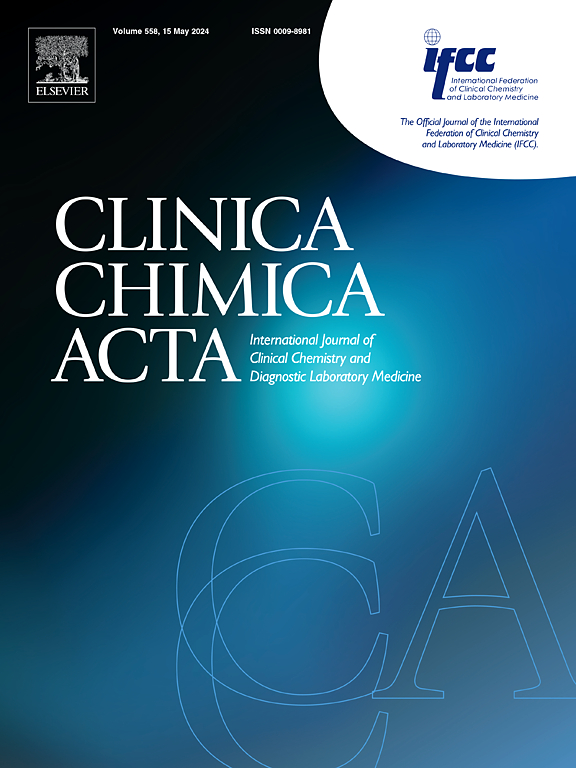Acute kidney injury and energy metabolism
IF 3.2
3区 医学
Q2 MEDICAL LABORATORY TECHNOLOGY
引用次数: 0
Abstract
Acute kidney injury (AKI) predominantly affects hospitalized patients, particularly those in intensive care units, and has emerged as a significant global public health concern. Several factors, including severe cardiovascular disease, surgery-induced renal ischemia, nephrotoxic drugs, and sepsis, contribute to the development of AKI. Despite the implementation of various clinical strategies to prevent or treat AKI, its morbidity and mortality remain high, and there are no clinically effective therapeutic agents available. The limitations of traditional renal function markers (such as urine output, serum creatinine, and urea nitrogen levels), including their delayed response and insensitivity, underscore the urgent need for novel early biomarkers to facilitate the timely diagnosis of AKI. The proximal tubular epithelial cells in the kidney play a central role in both the onset and progression of AKI. These cells are highly metabolically active and have a substantial energy demand, primarily relying on fatty acid oxidation to meet their energy needs. Acylcarnitines are crucial in transporting fatty acids from the cytoplasm into the mitochondrial matrix for β-oxidation, which generates energy essential for maintaining cellular function and viability. This review aims to summarize the current understanding of AKI, including its triggers, classification, underlying mechanisms, and potential biomarkers. Special emphasis is placed on the role of fatty acid and carnitine metabolism in AKI, with the goal of providing a theoretical foundation for future investigations into AKI mechanisms and the identification of early diagnostic biomarkers.

求助全文
约1分钟内获得全文
求助全文
来源期刊

Clinica Chimica Acta
医学-医学实验技术
CiteScore
10.10
自引率
2.00%
发文量
1268
审稿时长
23 days
期刊介绍:
The Official Journal of the International Federation of Clinical Chemistry and Laboratory Medicine (IFCC)
Clinica Chimica Acta is a high-quality journal which publishes original Research Communications in the field of clinical chemistry and laboratory medicine, defined as the diagnostic application of chemistry, biochemistry, immunochemistry, biochemical aspects of hematology, toxicology, and molecular biology to the study of human disease in body fluids and cells.
The objective of the journal is to publish novel information leading to a better understanding of biological mechanisms of human diseases, their prevention, diagnosis, and patient management. Reports of an applied clinical character are also welcome. Papers concerned with normal metabolic processes or with constituents of normal cells or body fluids, such as reports of experimental or clinical studies in animals, are only considered when they are clearly and directly relevant to human disease. Evaluation of commercial products have a low priority for publication, unless they are novel or represent a technological breakthrough. Studies dealing with effects of drugs and natural products and studies dealing with the redox status in various diseases are not within the journal''s scope. Development and evaluation of novel analytical methodologies where applicable to diagnostic clinical chemistry and laboratory medicine, including point-of-care testing, and topics on laboratory management and informatics will also be considered. Studies focused on emerging diagnostic technologies and (big) data analysis procedures including digitalization, mobile Health, and artificial Intelligence applied to Laboratory Medicine are also of interest.
 求助内容:
求助内容: 应助结果提醒方式:
应助结果提醒方式:


